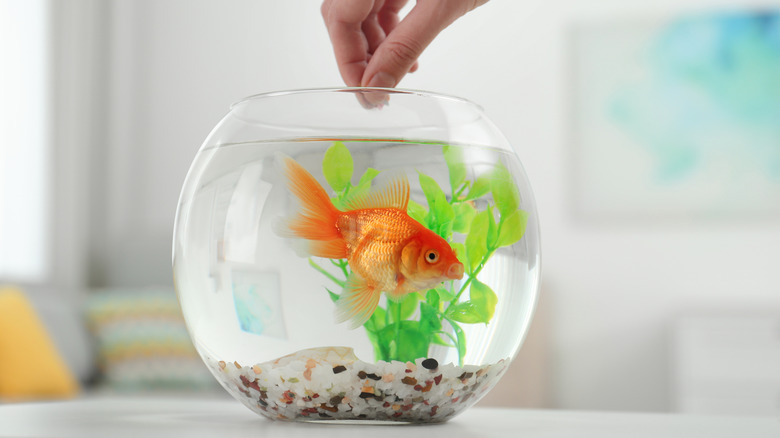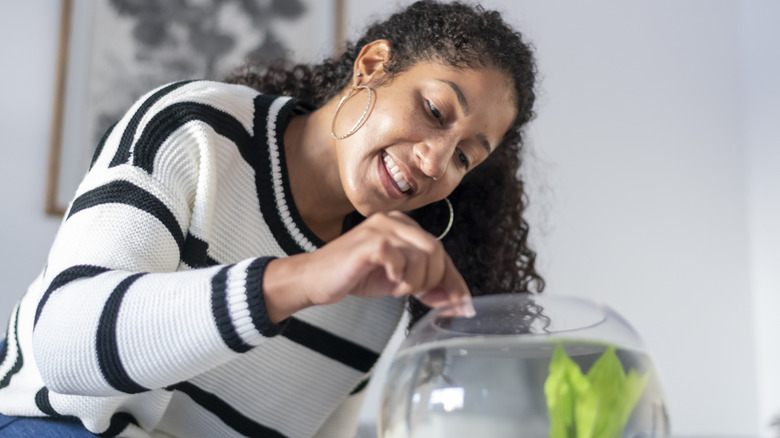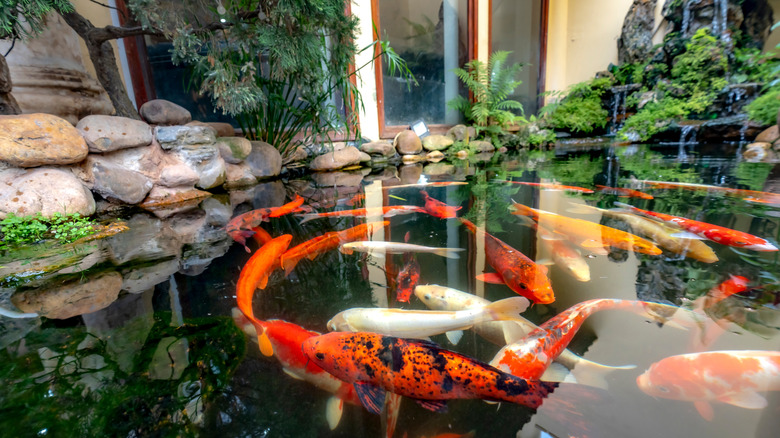List Of Foods Goldfish Can Eat
In the wild, goldfish munch on aquatic plants, bugs, small crustaceans, and even smaller fish. These provide the necessary protein to survive. However, fish that live in an aquarium aren't exposed to these natural food sources. Instead, they are dependent on whatever food is given to them.
As a pet parent, it's your responsibility to ensure your fish receive all the nutrients necessary to support their well-being. While a tin of fish flakes provides a convenient way to feed your omnivorous fish, if you want your goldfish to thrive, your best bet is to supplement their diet with nutrient-dense, natural foods. Goldfish can be appreciative eaters, consuming all that you're willing to feed them. They'll happily consume both plants and meats, provided they're cut small enough to fit in their tiny mouths. These natural food sources can provide them with the supplemental protein and optimal nutrition. Adding variety to meals is also a great way to keep your goldfish happy.
Goldfish can eat cucumbers and other vegetables
It's not much trouble to prep a dinner for a goldfish. In some cases, fresh food can rival or exceed the nutrition found in the goldfish flakes. Raid the fridge to find appropriate vegetables and fruit for your goldfish: a cooked pea with the shell removed, a blanched romaine lettuce leaf, or bits of cooked zucchini and cucumber.
According to Luke's Goldies, you can prepare cucumber for your goldfish by removing the seeds from the fruit and finely chopping it into a tiny mince. Next, submerge the cucumber in into a bowl of water. From there, boil the water or microwave it until the cucumber has softened. Cool the cooked cucumber in a bath of ice water before distributing it to your fish in the aquarium.
Goldfish appreciate animal proteins
If you keep reptiles or amphibians as pets, you might have something on hand that your goldfish will enjoy. Toss in a few fresh, frozen, or freeze-dried brine shrimp, mealworms, or crickets. Goldfish will also eat earthworms, waxworms, bloodworms, blackworms, and daphnia. According to some goldfish parents on Reddit, the best way to feed them these proteins is to chop them up into tiny bits for easy consumption. Goldfish living outside in a pond where temperatures fluctuate will especially relish these natural, high-value foods.
Keep in mind that any food leftover in the aquarium will start to rot and cause the water to become cloudy. Poor water quality is the most common cause of any fish disease, so be sure to any remove bits of fresh food or leftover pellets with a net or aquarium forceps after feeding. Maintain a healthy environment for your goldfish by sticking to a regular cleaning schedule and replacing one-third of the aquarium water on a weekly basis.


